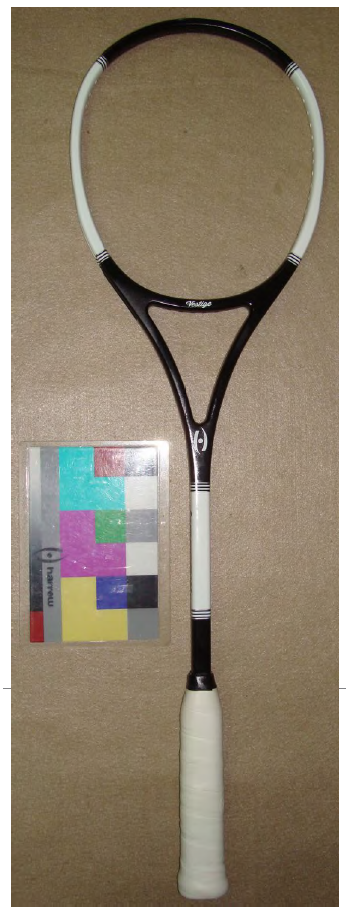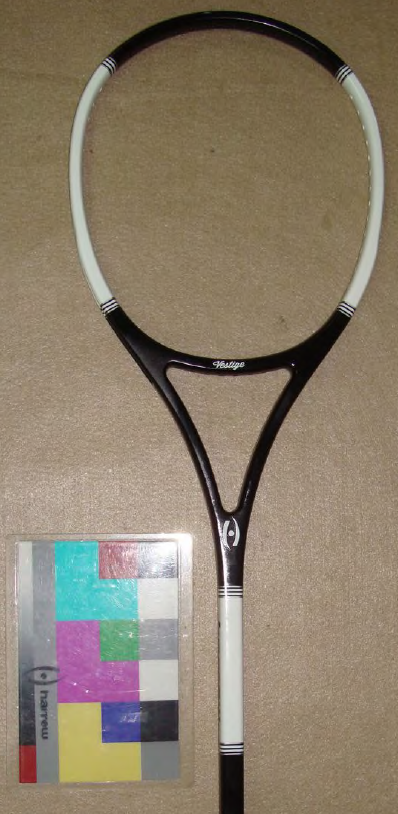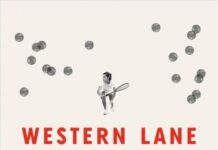By James Zug
 A quarter century ago, a squash racquet had a small head and weighed a ton—it’s amazing to imagine this, but the Head SX2, the standard racquet in the game in the late eighties, weighed 245 grams. This was considered an absolute innovation over the old wooden bats from the start of the decade, but nowadays, racquets for singles have a much bigger head and yet are 135 grams. Dripping with vibration-damping silicone and nickel-anodized, high-performance carbon fibers, these sticks are light years beyond what was used when hardball singles was at its peak. Because of this simple fact, even if hardball singles had remained the dominant version in North America, it would still be deeply in trouble in 2014.
A quarter century ago, a squash racquet had a small head and weighed a ton—it’s amazing to imagine this, but the Head SX2, the standard racquet in the game in the late eighties, weighed 245 grams. This was considered an absolute innovation over the old wooden bats from the start of the decade, but nowadays, racquets for singles have a much bigger head and yet are 135 grams. Dripping with vibration-damping silicone and nickel-anodized, high-performance carbon fibers, these sticks are light years beyond what was used when hardball singles was at its peak. Because of this simple fact, even if hardball singles had remained the dominant version in North America, it would still be deeply in trouble in 2014.
In the past two decades, a number of people, led by Charlie Baker, Tefft Smith and Preston Quick, have tried to sustain hardball singles. They hold a dozen tournaments a year, offer prize money for the open division at the nationals; they have promoted the green Astral ball on the wide courts.
But the biggest problem for young players is technology. The racquets are too big and light, thus the ball flies and skids and blasts. The game, at the higher levels, is now too fast. The shotmaking, which is what always made it such an attractive alternative to softball singles, is no longer as distinctive.
Racquet technology is a challenge for all racquet sports. In platform tennis (paddle tennis), racquets have gotten much lighter, stiffer and grippier—the bats now have so much texture and grit that players can spin the ball in ways unimaginable twenty years ago. In the 1980s, table tennis (ping pong) was scandalized by speed glue—volatile, adhesive compounds you affixed to the rubber on your racquet to get more speed and spin. After much debate, speed glue was banned, for the first time, from the Olympics in 2012, and today at tournaments, officials have devices to test for the thickness of the rubber on bats and for the presence of speed glue. But many players still used it.
In tennis, we have seen how the lighter, larger racquets have made baseline bashing standard, all but eliminating the serve-and-volley from singles play. Even in real tennis, the thousand-year-old father of all racquet sports, the issue of technology has become controversial. Racquet companies added layers of leatheroid vulcanized fibre and carbon rovings which give the bat more stiffness without more weight. This past year the governing associations changed racquet specifications because the balls were now flying at unprecedented speeds.
The proposal in squash, as originally engineered by Preston Quick, was to create a racquet suitable for hardball singles: smaller and heavier than today’s bats. Quick asked Harrow Sports to design a new stick. “I went into John Lesko’s office at the Denver Athletic Club,” remembers Dave Rosen, Harrow Sports Senior Director of Racquet Sales “and pulled out a half dozen old racquets that we could look at as models.” Then he had the Harrow factory in China make an entirely new mold and a new grommet system (because the old racquets have a 16×16 stringing pattern, not the typical 19×16 today).
The Vestige weighs 185 grams and has a 320-square centimeter head (a typical racquet these days is about 140 grams and has a 500-square centimeter head). The Vestige has a classic, retro look. Along the handle, Rosen had inserted the immortal phrase from racquets of yore: “Due to the nature of the game of squash, this racquet cannot be guaranteed against breakage.”
The racquet will be great for people to warm up—like a baseball player swinging a heavy bat in the on-deck circle; it will be used in hardball doubles (which many feel is also getting too fast at the professional level), perhaps especially in mixed doubles games. Parents might use it when playing with their young children.
And it can be used for hardball singles “One thing the Vestige hopefully will do is give the hardball its own racquet,” says Quick. “It will make hardball a separate sport. For the past twenty years, the game has had a crisis of confidence.Today it are no longer a dying sport. There are still hundreds of hardball courts around the country and now we have a racquet that renders them playable and attractive again.”
The Vestige is the tournament favor for the hardball nationals, to be held this month in New York.





